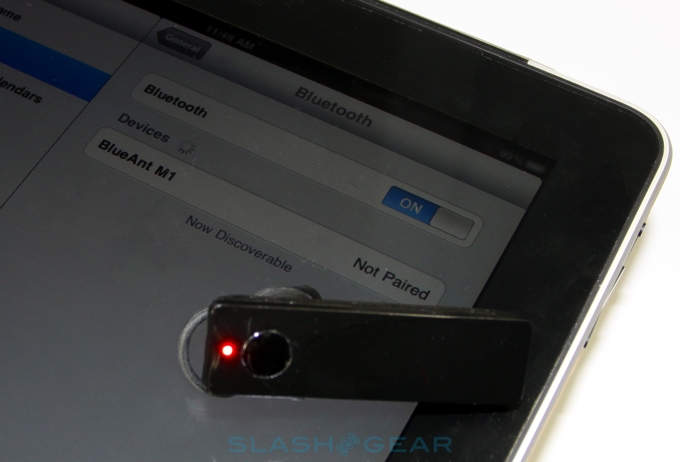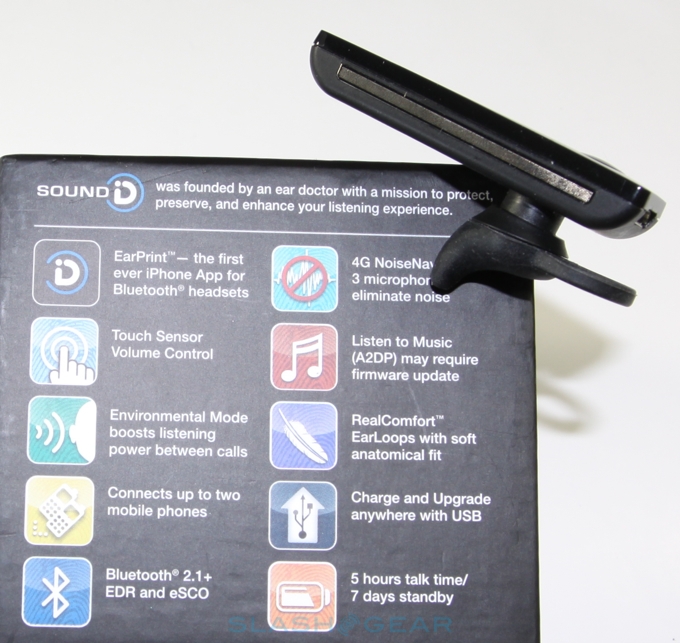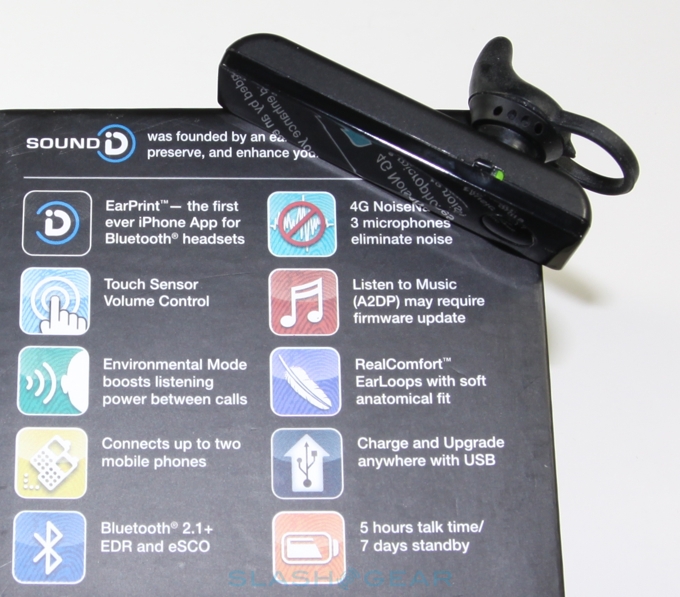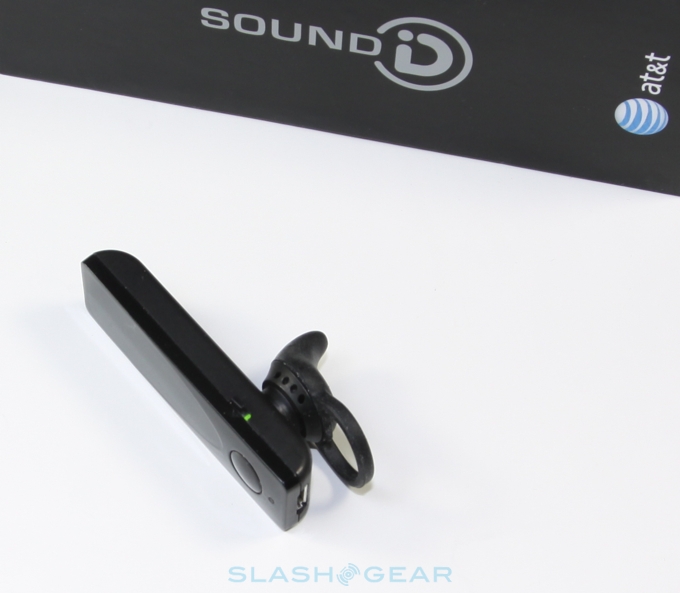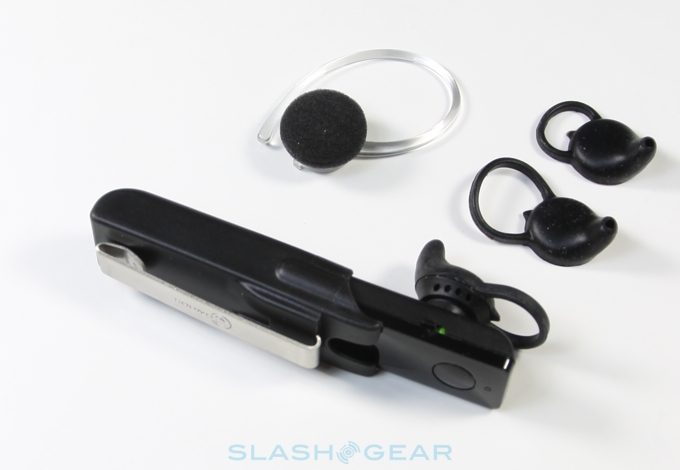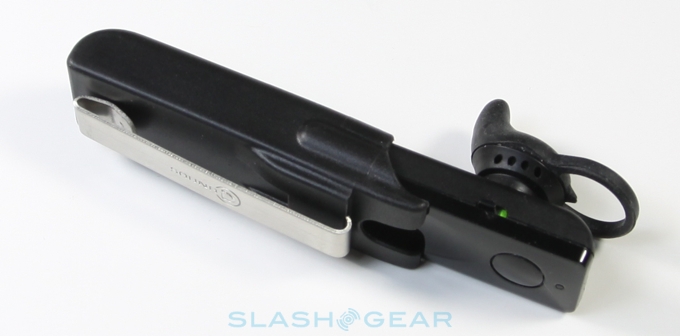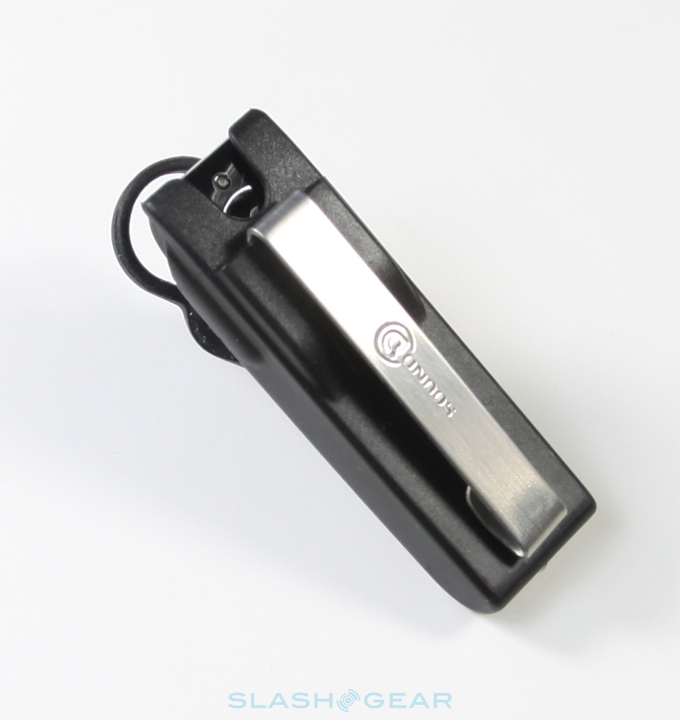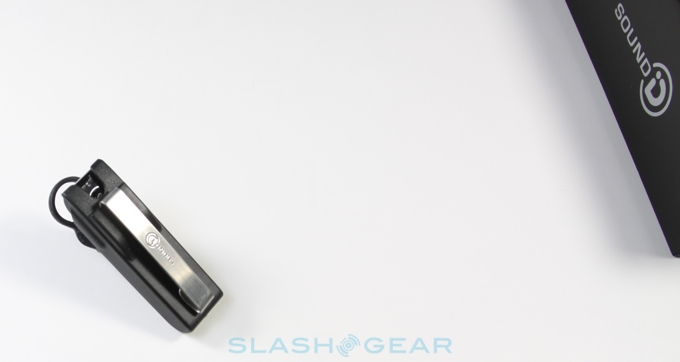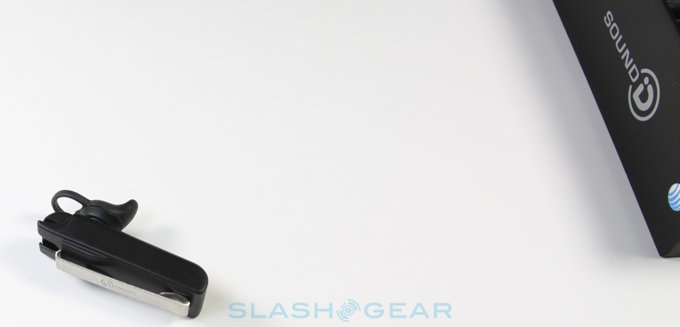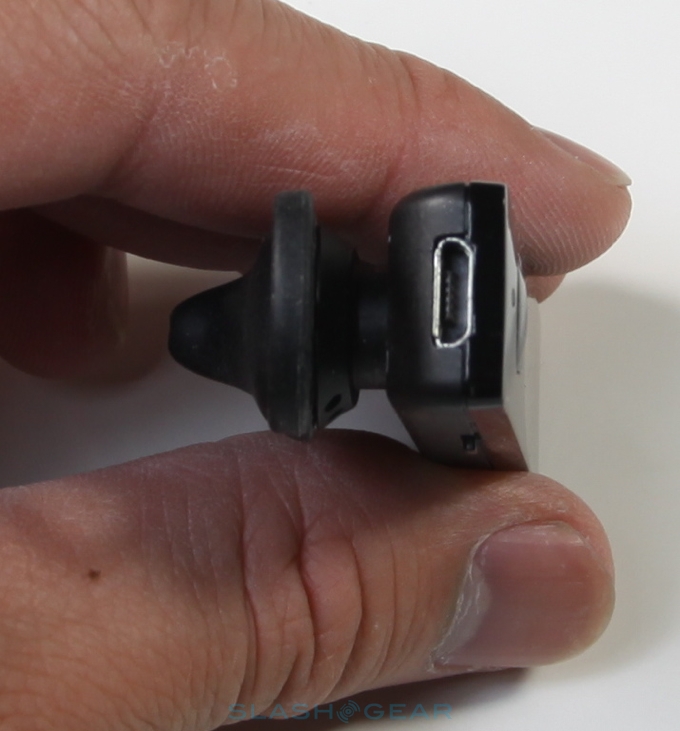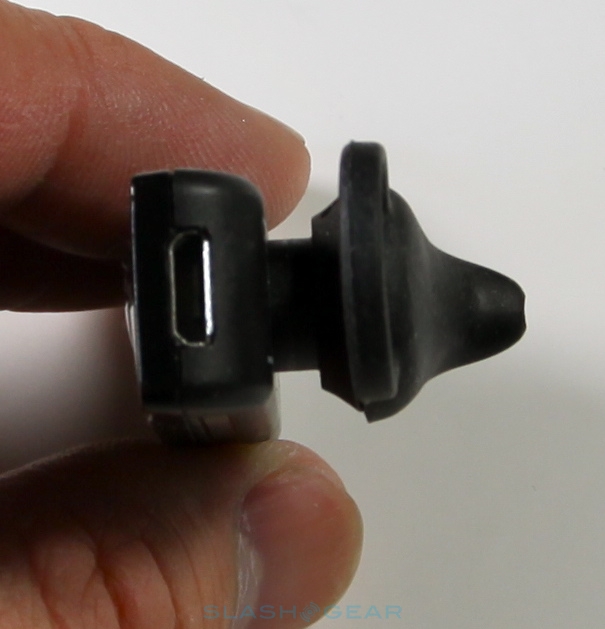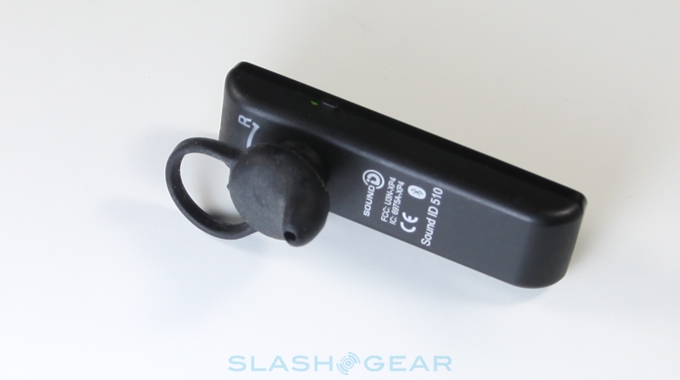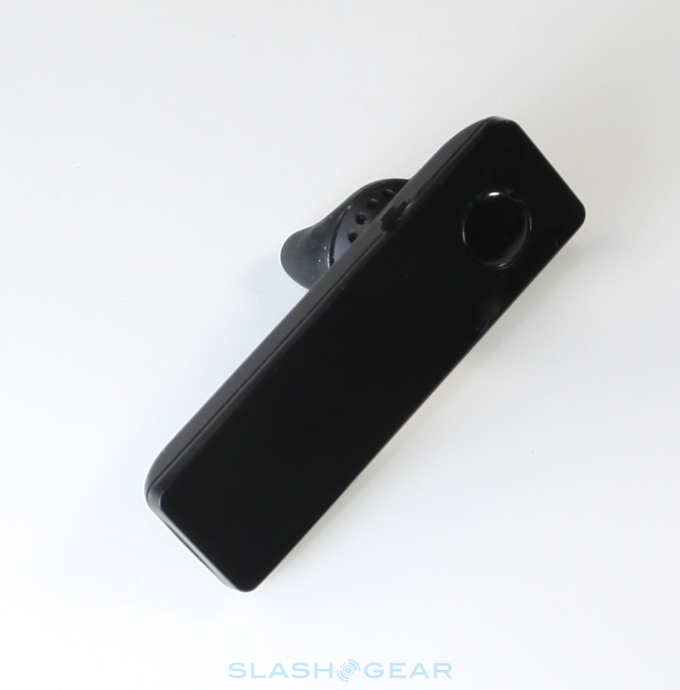Sound ID 510 Review
As the technology packed into Bluetooth headsets gets more complex, the method by which wearers control them gets similarly confusing. Where once a multifunction button was enough, now manufacturers are experimenting with voice control and intelligent DSP systems. Sound ID has taken a slightly different path, offloading control from their new Sound ID 510 headset onto a dedicated iPhone app. The question is, has Sound ID made things easier or is remote control software one step too far for the average Bluetooth user? Check out the full SlashGear review after the cut.
The Sound ID 510 headset itself is pretty generic in appearance. Around 2-inches long, it's finished in gloss black plastic and has a detachable ear-hook. We found the company's "Real Comfort" earbuds felt secure enough to hold the 510 in place without necessarily requiring the ear-hook, while still being soft enough that it was comfortable for longer periods. It even comes with a handsome carrying case. Physical controls include a multifunction button (with an LED indicator) and a power switch on the side. Volume control, meanwhile, is handled by sliding your finger along the front of the headset, a method which seems reasonable responsive but is perhaps a little less intuitive than a couple of hardware buttons.
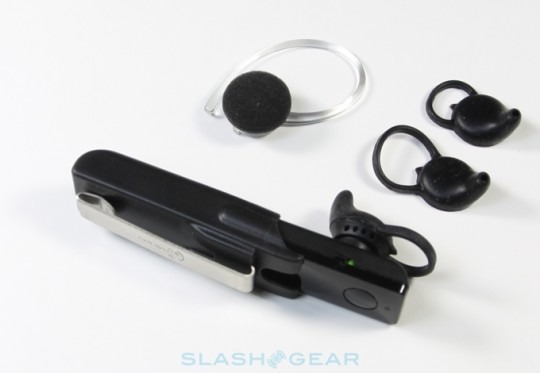
Hidden in the headset's boom are three microphones, which are combined with the Sound ID "3x Noise Navigation" DSP to slice out background sounds and traffic hiss. Specific settings are handled by the EarPrint iPhone app, more on which in a moment. Two simultaneous Bluetooth connections are supported; thanks to Multipoint, and Sound ID tell us there'll be an A2DP update at some point, which enables you to listen to streaming music (albeit in mono). Battery life is rated at over five hours talktime or up to 135hrs standby.
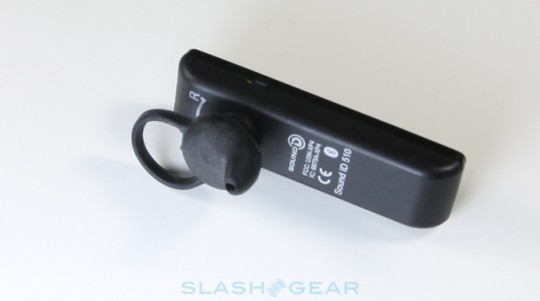
So far, so mainstream, but where the Sound ID 510 differentiates itself is in its companion software. A free download from the iPhone App Store – and currently only available for Apple's handset – EarPrint basically acts as a DSP management system and monitoring tool for the 510. Some of these seem more gimmicky than others; the Sound Level gauge, which uses the headset's microphones to judge the ambient noise level in dB, is a neat trick but not especially practical, but the Personal Sound tool does have a more noticeable impact on audio quality. By moving your finger around a grid you can simultaneously adjust tone and volume of incoming audio.
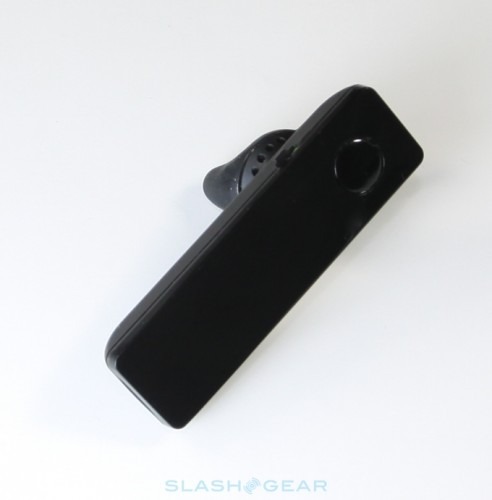
A "Find My Headset" button triggers a gradually rising wail from the 510 from your phone, to address those "where did I leave it?" moments, and there's also a remote battery status meter. Finally an "Environmental" mode promises to turn the Sound ID 510 into a hearing aid of sorts, boosting surrounding noise to help you listen to nearby conversations. It works, though as with the Sound Level gauge it wouldn't be something we reached for on a daily basis. Still, the basic sound processing tools work well, and it was useful being able to adjust settings depending on whether we were in the car or in a quieter environment.
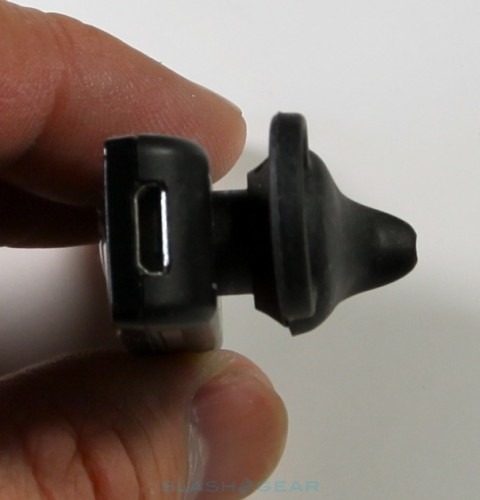
Of course, on the flip side you could argue that a decent DSP system – such as you'd find on an Aliph Jawbone or a recent Plantronics headset – would do much of the EarPrint's functionality automatically, and that Sound ID have left their features user-accessible so as to, in some way, justify the app itself. The limitation to iPhone OS only also means that Android and users of other smartphone platforms should look elsewhere unless they don't mind waiting on all the sound tools EarPrint offers. Sound ID say they're working on an Android version, but there's no definite timescale for its release. In addition, since the EarPrint app needs to be running on your iPhone in order to use the various DSP tools, it's perhaps not quite as convenient as a set-it-and-forget-it standalone headset. The Sound ID 510 currently isn't recognizable by the iPad.
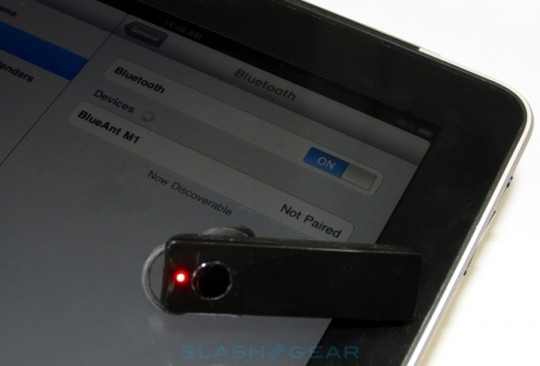
If you're glued to your iPhone and you can't see yourself jumping ship any time soon, the Sound ID 510 offers great audio performance; if you're also prone to tinkering with sound settings and like more granular control over audio quality, the EarPrint app should certainly satisfy. If you're not an iPhone user, or you prefer a headset you can simply rely on to do its own thing, we'd still point you in the direction of Aliph's latest Jawbone or something from the Plantronics range. At $129.99 you're paying a premium for the Sound ID 510 flexibility, but there's no doubting their adjustable DSP works.

